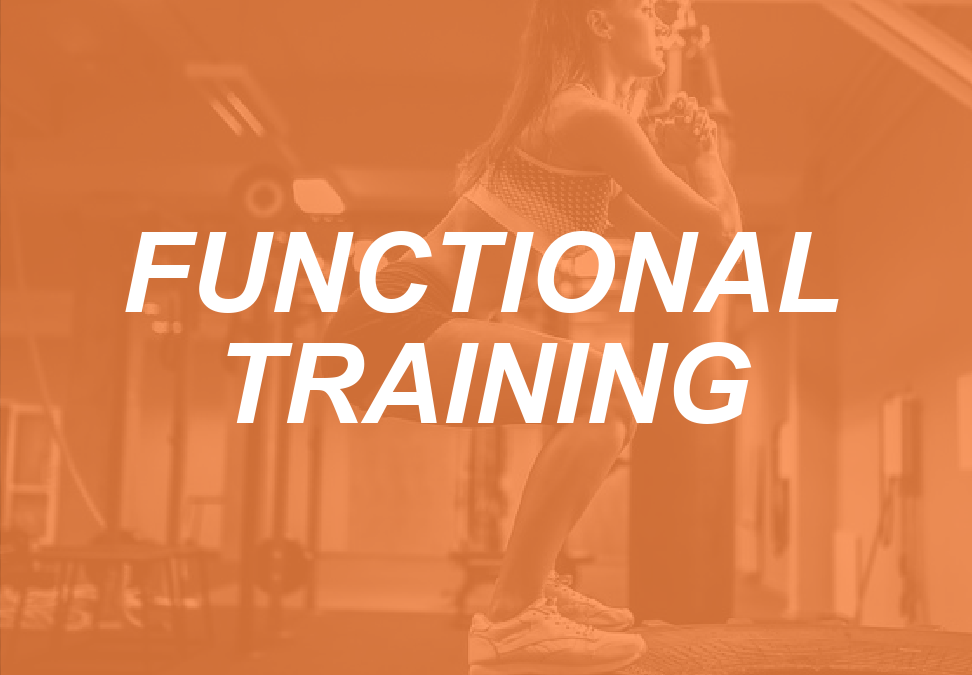Functional training enables clients to do daily tasks more easily. It involves strength training utilizing more than one muscle group through compound exercises and, oftentimes, plyometrics. Like a well-oiled machine, this approach to training helps a body move more efficiently.
Functional Daily Activities
In a given day, our movements might include pushing, pulling, stepping up, lifting overhead, picking up, and standing from a seated position. All of that is made easier through functional training.
Daily tasks that improve through this type of training include, but aren’t limited to:
- Climbing stairs
- Getting up off the floor
- Getting out of bed
- Carrying heavy items, like groceries, suitcases, and packages
- Picking up things off the floor
- Lifting a baby or a toddler out of a crib
- Standing from a seated position
- Putting things overhead (like a suitcase on a plane’s overhead bin)
- Retrieving items from overhead
- Pushing a lawnmower
- Opening bottles
- Using a manual can opener
Don’t forget the grip. When working on grip strength, use a small lacrosse ball or a tennis ball to squeeze. Have clients hang from an overhead bar. They can pick up objects with handles of varying circumferences and carry them with exercises like suitcase carries and farmer’s walks. More advanced clients will improve grip and wrist strength with upside down kettle exercises.
Types of Functional Training Equipment
Many gyms have areas designated for functional training. It’s a literal playground for gym rats. There are so many options, so no training day has to be the same as another. Equipment usually includes some or all of the following (and possibly more):
- battle ropes
- pull-up bars
- monkey bars/rings
- tires
- suspension cables
- agility ladders and cones
- punching bags
- jump ropes
- plyo boxes
- weightlifting platforms, bars, and plates
- kettlebells
- dumbbells
- sleds
- squat racks
- medicine balls
- stability balls
- half-balls
- sliders
- balance discs/boards
- ab benches
- sledgehammers like Core Hammer
Equipment can be helpful and make things more interesting, but isn’t necessary. Bodyweight exercises and isometric workouts are instrumental in functional training too.
Ten exercises to enhance functional training workouts without equipment include a foundation of the 5 basic movements and can vary from there:
- squats and all their variations
- deadlifts or bend and lift movements
- push-ups (modifications and regressions as necessary)
- pull-ups
- planks (so many variations based on the client’s fitness level)
- lunges
- wall sits
- handstands
- L stands
- V sits and V ups
- Turkish get-up
- crawls
[sc name=”functional” ][/sc]
When Should Clients Expect Results?
The time it takes to see results will vary.
Gaining strength and core stability helps in so many ways, so it really can be modified for anyone. While functional training makes the day-to-day easier, it is also beneficial for athletes training for a specific sport and exercise junkies looking to improve their fitness.
Body composition, increased energy, and muscle toning are three positive by-products of the efforts. Most clients also see an improvement in posture and balance. Better posture and balance lessens the likelihood of injury.
Results might be gradual, so it’s important to make note of them as clients realize things are getting better. Point out the subtle and not so subtle signs to look for:
- not getting winded climbing stairs
- the ability to carry heavy objects
- picking up items off the floor with ease
- increased endurance
- feeling stronger
- more energy
- better sleep and the ability to relax
- muscle definition
- better posture
- balanced equilibrium
How Often Should Clients Do Functional Training?
Like all training, clients will need rest and recovery between functional training sessions. Trainers are best to gauge how much recovery time is needed depending on the intensity of the sessions.
Since there is so much variety, various muscle groups can be targeted on different days allowing other muscle groups to rest. Functional training incorporates multiple muscle groups, which makes this more challenging than other types of training. However…
With challenges, come big rewards.
*NFPT offers a Functional Training Specialist course.
References:
https://www.healthline.com/health/fitness-exercise/functional-strength-training#:~:text=Functional%20training%20is%20a%20term,emphasize%20core%20strength%20and%20stability
https://www.self.com/story/what-functional-training-is-why-its-important
https://blog.nasm.org/functional-training-compound-workouts
Kim Becknell Williams is a freelance writer with more than ten years of personal training experience. Certified through NFPT, she is a Functional Training Specialist and holds a Master Trainer level certificate for resistance, endurance and sports nutrition. Kim has written two books including Gym Etiquette 101. She enjoys writing a variety of lifestyle articles and fitness blogs.


